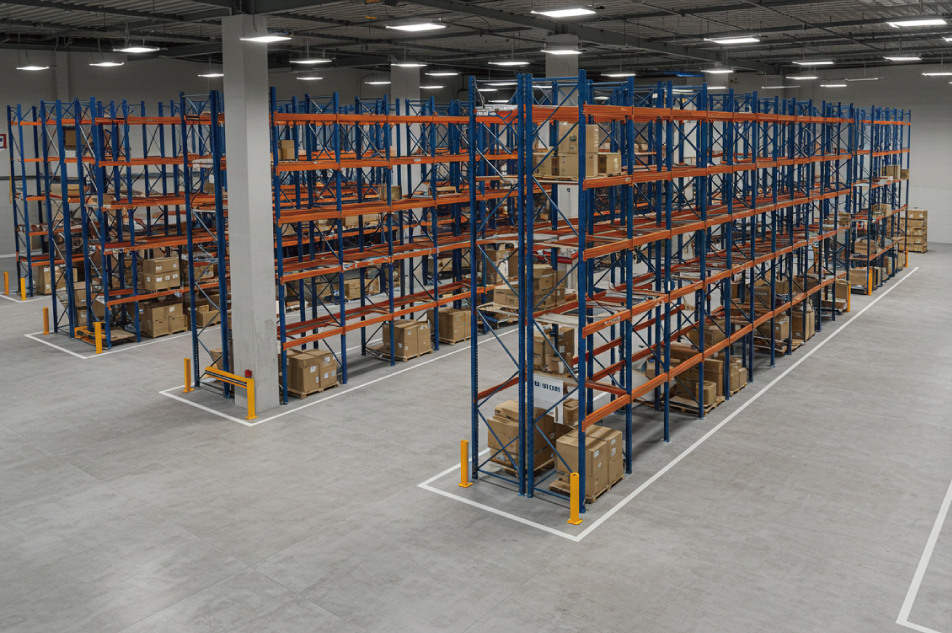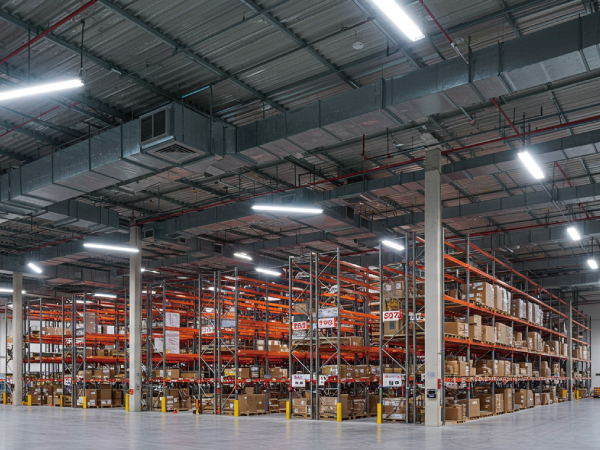A Comprehensive Guide to Build a Warehouse

1. Site Selection and Planning
The foundation of a successful warehouse project begins with choosing the right location. Consider these critical factors:
- Zoning Regulations: Ensure the selected site is zoned for industrial use and can accommodate your warehouse's specific requirements.
- Environmental Considerations: Assess the land for potential environmental issues such as soil contamination or flood risks.
- Accessibility: Choose a location with easy access to major transportation routes, including highways, railways, and ports if applicable.
- Utilities: Confirm the availability of necessary utilities, including electricity, water, and high-speed internet.
- Future Expansion: Select a site that allows for potential future growth and expansion.

2. Design and Layout
Once you've secured an appropriate site, focus on designing an efficient warehouse layout:
- Size and Capacity: Determine the required square footage based on your storage needs, material handling equipment, and operational processes.
- Space Optimization: Design your layout to maximize vertical space and minimize aisle width while ensuring safe and efficient operations.
- Workflow Efficiency: Plan your layout to optimize the flow of goods from receiving to storage to shipping.
- Flexibility: Incorporate modular design elements that allow for easy reconfiguration as your needs change.
3. Foundation and Structural Components
The physical structure of your warehouse is crucial for safety, durability, and efficiency:
Flooring
- Use high-quality concrete flooring designed to withstand heavy loads and frequent traffic.
- Incorporate floor joint systems to minimize maintenance and reduce equipment wear.
Walls and Roof
- Choose materials that provide insulation and durability, such as insulated metal panels or tilt-up concrete.
- Ensure proper waterproofing and drainage systems to protect your inventory.
Fire Safety
- Implement fire-resistant materials and proper compartmentalization.
- Install sprinkler systems and fire suppression equipment as required by local codes.
4. Warehouse Systems and Infrastructure
Modern warehouses require robust systems to support efficient operations:
Lighting
- Utilize energy-efficient LED lighting systems.
- Implement smart lighting controls to reduce energy consumption.

HVAC
- Install appropriate heating, ventilation, and air conditioning systems to maintain optimal temperature and humidity levels.
- Consider energy-efficient options like radiant heating for large spaces.
IT Infrastructure
- Set up a reliable network infrastructure to support warehouse management systems (WMS) and other technological needs.
- Implement proper cybersecurity measures to protect sensitive data.
5. Storage Solutions and Material Handling Equipment
Selecting the right storage and handling solutions is crucial for warehouse efficiency:
Racking Systems
- Choose from various options including:
- Selective pallet racking
- Drive-in/drive-through racking
- Push-back racking
- Pallet flow racking
- Consider factors like inventory turnover, pallet sizes, and forklift types when selecting your racking system.
Automation and Conveyor Systems
- Evaluate automated storage and retrieval systems (AS/RS) for high-density storage needs.
- Implement conveyor systems to streamline material flow and reduce manual handling.
Loading Docks
- Design efficient loading dock areas with appropriate levelers, seals, and bumpers.
- Consider cross-docking capabilities for fast-moving inventory.
6. Permits and Regulatory Compliance
Navigating the regulatory landscape is a critical step in warehouse construction:
- Building Permits: Obtain all necessary local and state building permits before commencing construction.
- Environmental Compliance: Ensure your project adheres to environmental regulations, including stormwater management and air quality standards.
- Safety Standards: Comply with OSHA regulations for workplace safety, including proper emergency exits, fire safety systems, and ergonomic considerations.
7. Construction Process and Timeline
Managing the construction process effectively is key to staying on budget and schedule:
- Choose Qualified Contractors: Select experienced contractors with a track record in warehouse construction.
- Develop a Detailed Timeline: Create a comprehensive project schedule, accounting for potential delays due to weather or supply chain issues.
- Implement Quality Control Measures: Establish regular inspections and quality checks throughout the construction process.
- Coordinate with Suppliers: Ensure timely delivery of materials and equipment to avoid costly delays.
- Maintain Open Communication: Foster clear communication channels between all stakeholders, including designers, contractors, and your internal team.
8. Cost Considerations and Financing Options
Building a warehouse represents a significant investment. Consider these financial aspects:
- Budget Planning: Develop a comprehensive budget that includes construction costs, equipment, permits, and contingencies.
- Financing Options: Explore various financing avenues, including:
- Traditional bank loans
- SBA loans
- Industrial revenue bonds
- Build-to-suit arrangements with developers
- ROI Analysis: Conduct a thorough return on investment analysis, considering factors like operational efficiency gains and potential revenue increases.
Conclusion: Keys to a Successful Warehouse Build
Building a warehouse is not an easy task—it requires careful planning, attention to detail, and expert execution. Despite the complexity of the construction process, with thorough and meticulous planning, your new warehouse can become a powerful asset in your supply chain, driving efficiency and supporting your business's sustainable success.
If you have any questions about warehouse design or scheduling, don't hesitate to contact us. Our team of experts is ready to advise you on the right fit for your warehouse setup.
Do you need more information?
Our team of experts will be happy to help you with any questions you may have.
More information